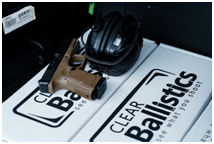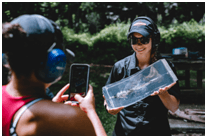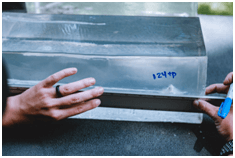10% Vs 20% GELATIN

Understanding the Differences Between 10% and 20% Ballistic Gel
As a leader in the manufacturing of clear synthetic ballistic gelatin, we understand the importance of selecting the right gel formula for your testing needs. The two most common ballistic gel formulations are 10% and 20%, but what sets them apart?
What Do the Percentages Mean?
The percentage in ballistic gel formulations refers to the gelatin-to-water ratio, which directly impacts the density and firmness of the gel. The higher the percentage, the denser and firmer the block will be once it sets in a mold.
10% Ballistic Gel – The FBI Standard
The 10% ballistic gelatin formula is the industry standard for law enforcement and forensic testing. This density is specified by the FBI Ammunition Testing Protocol, which was established following the 1986 Miami shootout to ensure reliable and consistent ballistic performance assessments. When using 10% ballistic gel, you are utilizing the same standard used by the FBI and law enforcement agencies for evaluating ammunition penetration and expansion.
20% Ballistic Gel – The NATO Standard
In contrast, 20% ballistic gelatin is significantly firmer and denser. This formulation meets NATO testing standards, which require a more rigid medium due to the exclusive use of full metal jacket (FMJ) rounds in testing. The higher gelatin-to-water ratio in 20% gel provides a tougher block that better withstands the impact of high-velocity projectiles, making it ideal for military and high-power weapon testing.
Which Ballistic Gel Should You Use?
Both 10% and 20% ballistic gels simulate the density and resistance of human muscle tissue, making them valuable tools for ballistic testing. However, choosing the right formula depends on your specific needs:
10% Ballistic Gel:
Recommended for law enforcement, forensic testing, self-defense ammunition evaluation, and civilian shooters. It is ideal for testing hollow points and expanding bullets commonly used for self-defense and hunting.
20% Ballistic Gel:
Best suited for military applications, NATO-standard testing, and high-velocity rifle rounds. It is preferred when evaluating FMJ rounds and armor-piercing ammunition due to its increased density.
The Bottom Line
Whether you are a firearms enthusiast, law enforcement professional, or military operator, ballistic gelatin provides valuable insight into ammunition performance. Testing rounds in a controlled gel medium helps assess penetration, expansion, and terminal ballistics in a way that real-world materials cannot replicate.
Both 10% and 20% ballistic gels offer unique advantages, and the choice ultimately comes down to personal preference and intended use. No matter which formula you choose, testing your ammunition with high-quality ballistic gel is both practical and exciting—delivering critical data and an engaging shooting experience!


